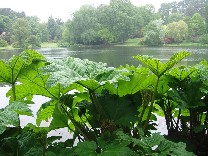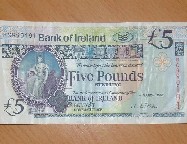
Hi, friends, it is so nice that there are many friends caring for and supporting my work on the little web site, and they have given me much help with their much effort and hard work as well. :-) Mr. Johnny Fox from Ireland is one of these friends. He has written many things about Ireland Cultures and something about the friendly co operations and friendship between Ireland and China. Sometimes, I do feel that he knows much more than I know indeed. :-) So, here, I would like to publish one of his works -- something about Ireland's currency and hope it is helpful. :-)
If you have any questions, comments and suggestions, please write to
shirley@ebridge.cn , or
shirleyz004@yahoo.com, You are welcomed.
--ShirleyFri, Dec 30, 2005Hi, Shirley,
I'd like to tell you a little about the currency of Ireland, I was wondering if you could tell me a little more about Chinese currency because I know nothing about it. You are probably familiar with the coins and notes having spent some time in Europe but you might not have known meanings on the currency.
The currency we use here in Ireland is the Euro which is used in 12 countries in the Euro Zone. San Marino, The Vatican, and Monaco also have their own Euro coins
even though they are not EU member states. The Euro was introduced in 1999 to replace the 'Punt' which was the currency in Ireland before the changeover. There are red coins (copper color), yellow (gold color) and bi-color (gold and silver). The front side shows a representation of the European Union and the reverse side shows an image that is unique to each country in the Euro zone. Each country has it's own emblem, in Ireland the coins feature what is called the 'Brian Boru Harp'. The harp is a traditional Irish stringed musical instrument. The harp is featured on all official Irish Government documents and publications such as passports and driving licenses. A similar harp is also the logo for Guinness but it is reversed so as not to confuse it with the Irish government harp as featured on the coins.
The denominations of the coins are 1c, 2c, 5c, 10c,20c, 50c, 1 Euro, and a 2 Euro Coin. The 1 cent coin is very small, measuring just 1 centimeter in diameter
and so can be lost very easily down behind someone's couch. Some Euro zone countries will have fewer 1 cent coins but here in Ireland you will be given a 1 cent
coin with almost every transaction.
You can check out the site below to see images of the Irish Euro coins as well as images of the 11 other Euro zone coins and some commemorative coins.
http://europa.eu.int/comm/economy_finance/euro/notes_and_coins/coins_images_irl_en.htm
The denominations of the notes are 5, 10, 20, 50, 100, 200, and 500 Euros. It is very rare to see a 500 and 200 Euro banknote. I have only seen a 100 Euro banknote once. As far as I know, ATM machines will only dispense up to 50 Euro notes but I would expect the machines to dispense 100 Euro notes in the near future. Each banknote depicts famous European architectural gateways on the front, and bridges on the reverse side, obviously to symbolize the

connection between each EU member state. Each note captures a defining moment in European architecture through the ages from Classic, Romanesque, Gothic, Renaissance, Baroque and Rococo, the Age of Iron and
Glass, and Modern 20th Century.
-- Johnny
 Hi, friends, it is so nice that there are many friends caring for and supporting my work on the little web site, and they have given me much help with their much effort and hard work as well. :-) Mr. Johnny Fox from Ireland is one of these friends. He has written many things about Ireland Cultures and something about the friendly co operations and friendship between Ireland and China. Sometimes, I do feel that he knows much more than I know indeed. :-) So, here, I would like to publish one of his works -- something about Ireland's currency and hope it is helpful. :-)
Hi, friends, it is so nice that there are many friends caring for and supporting my work on the little web site, and they have given me much help with their much effort and hard work as well. :-) Mr. Johnny Fox from Ireland is one of these friends. He has written many things about Ireland Cultures and something about the friendly co operations and friendship between Ireland and China. Sometimes, I do feel that he knows much more than I know indeed. :-) So, here, I would like to publish one of his works -- something about Ireland's currency and hope it is helpful. :-)  connection between each EU member state. Each note captures a defining moment in European architecture through the ages from Classic, Romanesque, Gothic, Renaissance, Baroque and Rococo, the Age of Iron and
connection between each EU member state. Each note captures a defining moment in European architecture through the ages from Classic, Romanesque, Gothic, Renaissance, Baroque and Rococo, the Age of Iron and